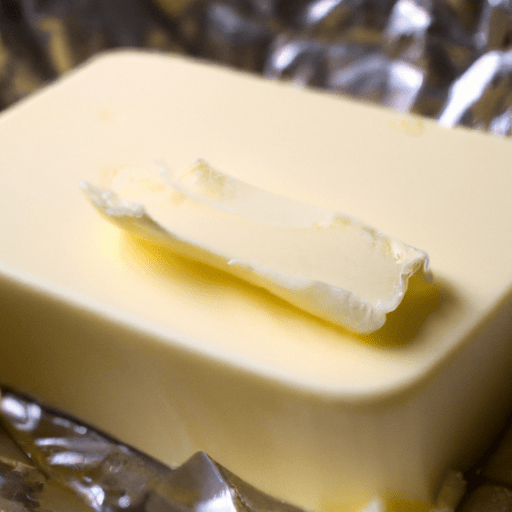The Wonderful World of Butter: A Kitchen Staple
Butter, a delightful and versatile ingredient, has been a beloved staple in kitchens around the world for centuries. Its rich taste, multitude of uses, and interesting history make it a fascinating and essential ingredient in cooking. In this blog post, we will delve into the world of butter, exploring its taste, common uses, nutritional value, and intriguing facts.
Taste and Texture
Butter is known for its creamy and indulgent flavor. Whether enjoyed on its own or incorporated into various recipes, its distinct taste adds a luscious richness that can elevate any dish. It boasts a gentle sweetness, combined with a subtle tanginess that tantalizes the taste buds. The velvety texture of butter, when melted, imparts a smooth and silky finish to dishes, making it a perfect addition to sauces, baked goods, and spreads.
Versatile Uses
The uses of butter in cooking are seemingly endless. From savory to sweet dishes, this ingredient can transform even the simplest of recipes into delectable creations. Whether you’re sautéing vegetables, basting a succulent roast, or baking flaky pastries, butter is a key player in adding depth and flavor.
Butter also shines as a spread, complementing freshly baked bread, muffins, and pancakes. Let’s not forget its role in creating mouthwatering sauces, such as the classic beurre blanc or hollandaise, which grace dishes with their luxurious taste and velvety smoothness.
Nutritional Value
While butter is undeniably a source of fat, when consumed in moderation, it can be part of a balanced diet. It contains essential vitamins such as vitamin A, E, K, and small amounts of vitamin D. Additionally, butter is a good source of healthy saturated fats, which are crucial for the body’s absorption of fat-soluble vitamins and provide long-lasting energy.
It’s worth noting that the nutritional value of butter can vary based on factors such as source, production methods, and quality. Choosing high-quality, grass-fed butter can offer additional health benefits, as it may contain higher levels of omega-3 fatty acids and antioxidants.
History and Fun Facts
The origins of butter can be traced back thousands of years. It is believed to have been accidentally discovered when early nomadic communities stored milk in animal skins or stomachs. The constant movement and agitation caused the separation of cream from the milk, resulting in butter.
During the Roman Empire, butter was valued not only for its culinary uses but also for its medicinal properties. It wasn’t until later centuries that butter gained wider popularity, eventually becoming a common ingredient in Europe and beyond.
Did you know that butter was once so prized that it was even used as currency? In 17th-century France, the iconic sculpted shapes of butter were exchanged as tokens of wealth and status.
Conclusion
Butter, with its delightful taste, versatility, and fascinating history, holds a special place in our hearts and kitchens. Whether you’re using it to enhance the flavor of a simple dish or to create a decadent pastry, butter has the power to evoke comfort and delight. So, embrace the wonders of butter in your cooking adventures, and let its creamy splendor elevate your culinary creations to new heights!
Butter
Origin and History: Butter is believed to have originated around 4500-2000 BCE in ancient Mesopotamia (modern-day Iraq). It was first made by churning milk or cream to separate the fat molecules from the liquid. The process of making butter spread throughout Europe, with evidence of its use dating back to ancient Roman and Greek civilizations.
Common Uses: Butter is a versatile ingredient used in various culinary applications. It is commonly used in baking to add richness and flavor to cakes, cookies, and pastries. Butter is also used as a cooking medium for sautéing and frying. It is an essential component in many sauces, such as hollandaise and béarnaise. Additionally, butter is often spread on bread, used in sandwiches, or melted over vegetables and popcorn.
Nutritional Benefits: Butter is a dairy product that contains vitamins A, D, E, and K. It is a good source of saturated fats and cholesterol. While excessive consumption of saturated fats can have negative health effects, moderate butter consumption can provide essential fatty acids and contribute to the absorption of fat-soluble vitamins.
Unique Properties: Butter has a distinctive flavor and creamy texture, which are highly sought after in cooking and baking. It has a low smoke point, meaning it can burn at high temperatures, so it is commonly used for low to medium heat cooking. The melting point of butter is around 32-35°C (90-95°F), which provides a desirable mouthfeel and texture in various dishes.
Historical Significance: Butter has played a significant role in the culinary traditions of many cultures. It has been used as a food source, a symbol of luxury, and even as a currency in some societies. In ancient times, it was common for butter to be specially prepared and adorned before being offered to gods or important guests. Throughout history, butter has been associated with prosperity, wealth, and celebrations.




Use the share button below if you liked it.
It makes me smile, when I see it.